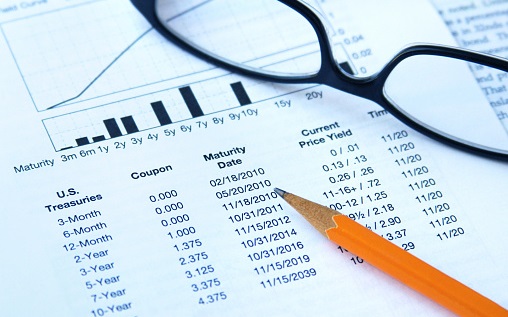Sentiment saw a turn for the better yesterday during the US session. After Asian equities experienced a rout during Monday’s Asia session on a combination of Covid-19 delta variant spread fears in the region as well as fears about potential further heavy-handed regulatory action from Chinese policy makers (and pulling European and US equities lower with them), major US equity bourses underwent a rebound during US trading hours. The S&P 500 ended the day 0.2% higher, the Nasdaq 100 0.1% higher and the Dow 0.2%. Analysts cited price action in bond markets as offering support; US 10-year real yields fell to fresh record lows yesterday under -1.12% and are pressing lower from here this morning. Similar moves are being seen across other developed economy inflation-adjusted bond markets (10-year German real yields also fell to record lows). Low and falling real yields increase the incentive to hold comparatively better yielding equities (where investors enjoy dividends and the prospect of capital gains) so the lower they go, the better this is for stocks in general. Low and falling real yields are also a sign that financial conditions are incredibly easy, as engineered by accommodative central bank policy. Stocks of course love this.
Some argue that the fall in global real yields is partly being driven by last week’s dovish shift from the ECB that suggests accommodative policy will persist for longer than previously anticipated. However, others suggest that the fact that real yields have been plummeting ahead of Wednesday’s Fed meeting suggests bond markets are expecting a dovish tilt. The worry is that the FOMC might adopt a more pessimistic view on global growth given the surge in global Covid-19 delta variant cases (including in the US). If this is not the case, markets may be caught offside, and we could see quite a sharp jump in yields. This would likely hurt equities. In the meantime, most expect equity markets to remain subdued and in wait-and-see mode. Note also that this week is “peak” earnings season and things could get very interesting after today’s close, when Apple, Microsoft, Alphabet (Google’s parent company), Visa, Starbucks and Advanced Micro Devices all report earnings. So far earnings have been on balance strong and have arguably supported major US equity bourses at close to record highs. Tonight, is a big hurdle to this narrative, however.
Looking at markets this morning; major US index futures are mixed/flat (E-mini S&P 500 futures down 0.1%, Nasdaq 100 futures up 0.1%) and remain just a slither from record levels. European equities, meanwhile, mostly trade in the red, though the losses are not catastrophic (Stoxx 600 -0.3%). Tuesday saw further selling in Chinese stock markets (though other regional bourses performer better). Though down about 1bps on the day, US 10-year yields remain supported just above 1.25% and have, for the most part, not been tracking the move lower in real yields, which implies rising inflation expectations. Indeed, US 10-year break-even inflation expectations (calculated by subtracting the 10-year TIPS yields from the 10-year nominal yield) have risen back to test 2.40% from under 2.30% earlier on in the month. The US treasury curve, which is little changed in pre-market trade, will get further direction from a more than $60B 2-year note action at 1800BST, which will serve as a decent gauge of investor demand with short-end yields now at slightly higher levels. European bond yields for the most part is also continuing their negative slant, with German 10-year yields down about 1bps on the session to under -0.42%. Some are arguing that continued angst in Chinese equity markets is triggering demand for global safe haven assets, which US and European government bond yields most certainly are. This could be weighing on yields, just as it seems to be weighing on yields in China.
Turning to commodities; crude oil prices are modestly higher ahead of the US open, seemingly shrugging off the continued deterioration in sentiment in Chinese markets. WTI continues to consolidate close to $72.00, caught between the bearish impulses of persistent Covid-19 pandemic fears (i.e. how the spread of the global delta variant might impact global growth) and the bullish impulses from commodity strategists, who continue to expect global oil markets to remain undersupplied for the rest of the year, which they expect to exert downwards pressure on global inventories and upwards pressure on prices. With regards to Covid-19 delta variant fears, there are early signs from the UK that the surge in infections may be slowing and this is being taken as a positive signal for other parts of the world (mainland Europe and the US), where this most recent wave in delta variant driven infections is generally seen as being a few weeks “behind” the UK. Crude oil traders will be looking ahead now to key macro events later in the week (like the FOMC on Wednesday and key US data on Thursday and Friday), as well as crude-specific data like tonight’s weekly API inventory report their recent consolidation close to $1800, despite the fall to fresh record lows in US real yields. Persistent demand for USDs is the main culprit that has prevented the precious metal from advancing on from the $1800. This week’s FOMC meeting will of course be key for gold.
Speaking of the US dollar; the DXY is modestly firmer on the day, having again found demand to keep it above the 92.50 level. FX markets have a defensive bias this morning, seemingly having been roiled by goings on in Chinese markets (like European equity markets have been). Indeed, we have seen an unusually large move lower in CNH (USDCNH has jumped to multi-month highs above 6.50). This is helping keep the safe-haven USD in demand, but is also helping to underpin JPY, which is this morning’s best G10 performer. Risk-sensitive NZD is this morning’s worst performer, down about 0.6% on the session, with NZDUSD losing its grip of the 0.7000 level to fall back to the 0.6950s. CAD, NOK and AUD are all also suffering, though to a lesser extent, with the AUDNZD crossing seemingly benefitting a little from news that lockdown restrictions will be eased in Australian state Victoria. EUR and GBP, meanwhile continue to meander ahead of risk events later in the week, with both trading as a function of the buck for now. EURUSD sits close to 1.1800 and GBPUSD is currently just under 1.3800.
The Day Ahead
US Durable Goods Orders data is out at 1330BST and may get some attention, though is unlikely to move markets much. We also have an RBA speaker up at 1335BST (Assistant Governor Debelle), so Aussie trader beware. US House Price data for the month of May is then out at 1400BST, ahead of the US Conference Board’s Consumer Confidence data release at 1500BST. This latter data point will have the ability to impact sentiment in the US session, so it is worth a watch. After that, there isn’t much until 2130BST when the weekly Private API crude oil inventory report is released.




